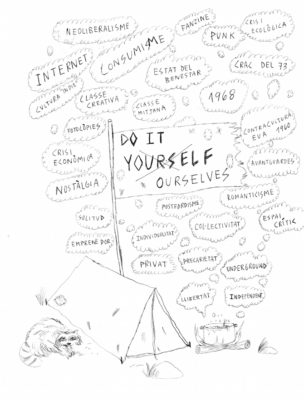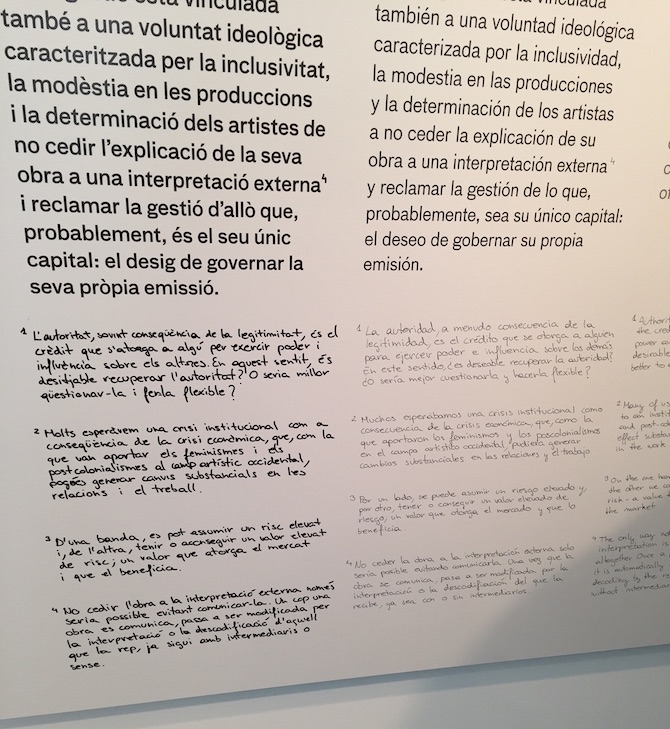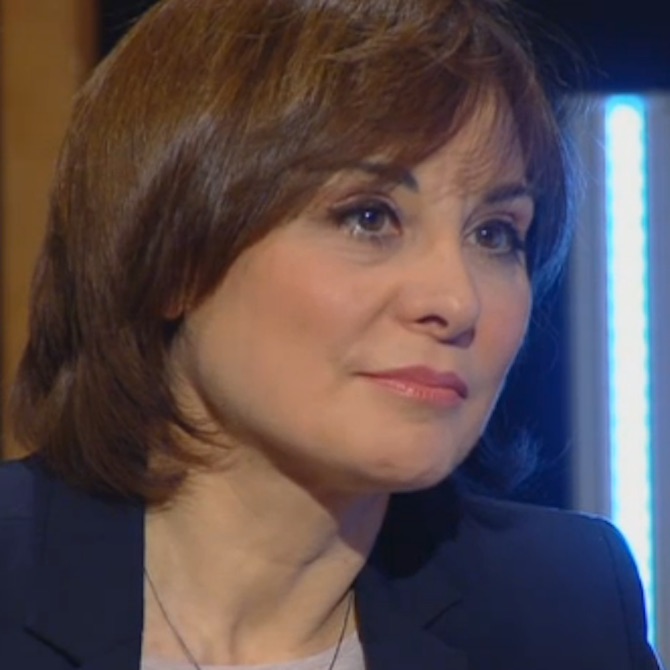Search
To search for an exact match, type the word or phrase you want in quotation marks.
A*DESK has been offering since 2002 contents about criticism and contemporary art. A*DESK has become consolidated thanks to all those who have believed in the project, all those who have followed us, debating, participating and collaborating. Many people have collaborated with A*DESK, and continue to do so. Their efforts, knowledge and belief in the project are what make it grow internationally. At A*DESK we have also generated work for over one hundred professionals in culture, from small collaborations with reviews and classes, to more prolonged and intense collaborations.
At A*DESK we believe in the need for free and universal access to culture and knowledge. We want to carry on being independent, remaining open to more ideas and opinions. If you believe in A*DESK, we need your backing to be able to continue. You can now participate in the project by supporting it. You can choose how much you want to contribute to the project.
You can decide how much you want to bring to the project.

Autogestió (Self-Organization) is an exhibition that could perfectly well be titled “The world according to Antonio Ortega”, because it is a show that allows us to enter into the mind (I believe Víctor Valentín described it just like this) of its maker, Antonio Ortega, one of the most lucid insights into the current art scene. As evidenced by the coherence of his work which encompasses his own pieces, performative conferences, his activities as “a tertiary artist” during his time as the person in charge of public programmes at the Centro de Arte Santa Mònica (2003-2008), his PhD, and its later publication, on the process of monopolisation of art by the institution titled Demagogia y propaganda en arte según Antonio Ortega and his activity as a teacher at the Escuela Massana.
The exhibition he’s currently curating at the Fundació Miró deals with the subject of self-organization, from which sub-themes naturally derive, such as empowerment, control over one’s own work, DIY (Do it yourself), but also DIWO (Do it with others), alternatives to the system, the culture of the entrepreneur and precariousness; amongst others.
Self-organization is at present a more than habitual practice no doubt 60 % of artists and curators are currently working within these parameters. This makes it pertinent to ask if self-organization is a choice, the result of the generalization of certain tools of production and distribution that allow this possibility or a consequence of the economic crisis. All this considered, Ortega proposes to trace a path through some of these practices, pausing to pay special heed to specific voluntary gestures of established and respected artists who at a specific moment in time opt, with all the awareness of the world, for such sporadic gestures of empowerment (we’re talking about Gilbert & George, Hernández Pijoan and Joan Miró himself, burning one of his canvases in a totally controlled manner, subverting everything that was expected of him at that time).
In a certain way, the exhibition is also self-organised, in the sense that the curator, an artist himself, has taken control of numerous decisions that are habitually predetermined by the institution. In the first instance, emphasising and confirming his authority to talk about the subject, that is legitimised in various ways: by the nature of his own work, often along DIY lines; for having previously exhibited in different self-organised spaces (Fireplace and Espai Colona) and, last but not least, precisely for continually questioning his own authority to talk about the subject. In his catalogue text he introduces “ten suspicions” that are complemented (and endorsed) by the authority of Pilar Bonet in her role as historian, art critic, and lecturer at the University of Barcelona. In the exhibition, the corrections and observations added to the texts on the introductory panels are at the hand of the artist Mariona Moncunill who doesn’t hesitate to tinker with many of the curator’s affirmations.

Autogestió regains control of the work’s realization but also its distribution. Unlike other ambits of creation (above all, film and music) where various formulas for distribution (from online platforms to PSP) and also production (like crowdfounding, amongst others) have been encountered, in the context of art a series of contradictions still persist. We still talk about the commercialisation of unique pieces or limited editions of works made with media that permit unlimited reproductions; of buying and selling objects; of limited access: of institutions that have grown too big and find it difficult to adapt to the flexibility and dynamism demanded by the times, artistic practices and the public; of being able or wanting to form part of cultural industries…
Autogestió has to do with regaining control of the work and its distribution, control of the image and its communication rights. And in this sense, the exhibition presents a magnificent example, the canvases painted by Pere Llobera. The paintings are as magnificent as the history that precedes them. In 2014, Pere Llobera curated the group exhibition Una exposición luminosa, at the gallery Esther Monturiol. The impossibility of managing to access a photograph by Sigurdur Gudmundson led the curator to paint the image rather than relinquish it, and to exhibit this painting. This is the very commission that Antonio Ortega charges Pere Llobera with for this exhibition and its catalogue. In a prime example of self-organisation, Llobera converts himself into a sort of “oil printer” (Lloberas dixit) ) a reproducer of works by artists such as Yoko Ono, Gilbert & George or Piero Manzoni, amongst others, in such a way that the reproduction rights of the original works don’t go to any managing entity, so much as are transformed into honorariums for Llobera. Making friends (and also enemies) forms part of the process of self-organisation.
However, strategies of self-organisation in art are nothing more than a reflection of the formulas that are already implanted in other ambits of society, that are tied to the search for alternatives for production and responsible consumption. Curiously, in parallel, the most savage neoliberalism reads self-organisation as a form of entrepreneurship: the myth of the garage, as remembered by Rubén Martínez in his text for the catalogue, in which a young man (yes, it’s generally a “he”) on the margins of commercial structures creates something new that immediately leads to a successful startup, that subsequently leads to a new Steve Jobs who changes our lives and ends up becoming a multi-millionaire. But clearly, what this imaginary forgets is that in the garage there is usually a choral working process, much more DIWO than DIY.
In the end reality refutes the myth, revealing its true origins, precariousness. There’s little to add in view of the recently appeared latest reports (La actividad económica de los/las artistas en España, made by Marta Pérez Ibáñez and Isidro López-Aparicio and the Cartografía d’artistes visuals de Catalunya, still in the process of being prepared by the PAAC, the Plataforma Assembleària d’Artistes de Catalunya).So, we leave it here, but not without throwing out a couple of questions: is self-organisation, at this in point in time, the fruit of free choice? Does it respond to the use of specific tools of distribution? Or is it rather a plan B in the face of the crises of the institutions and/or a lack of other economic possibilities?

Montse Badia has never liked standing still, so she has always thought about travelling, entering into relation with other contexts, distancing herself, to be able to think more clearly about the world. The critique of art and curating have been a way of putting into practice her conviction about the need for critical thought, for idiosyncrasies and individual stances. How, if not, can we question the standardisation to which we are being subjected?
www.montsebadia.net
"A desk is a dangerous place from which to watch the world" (John Le Carré)